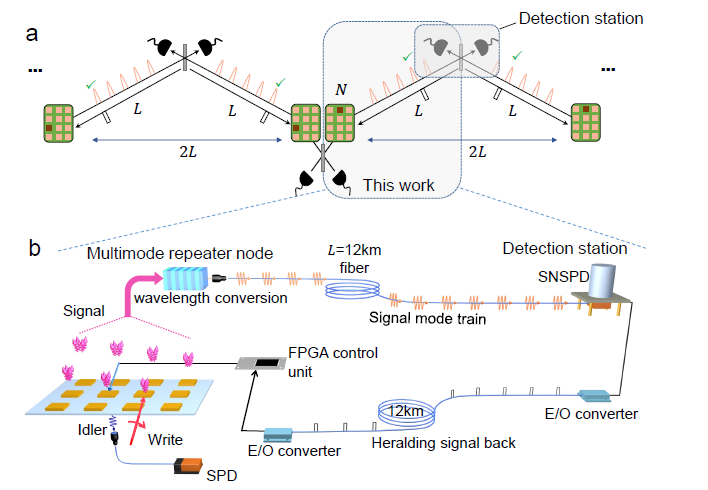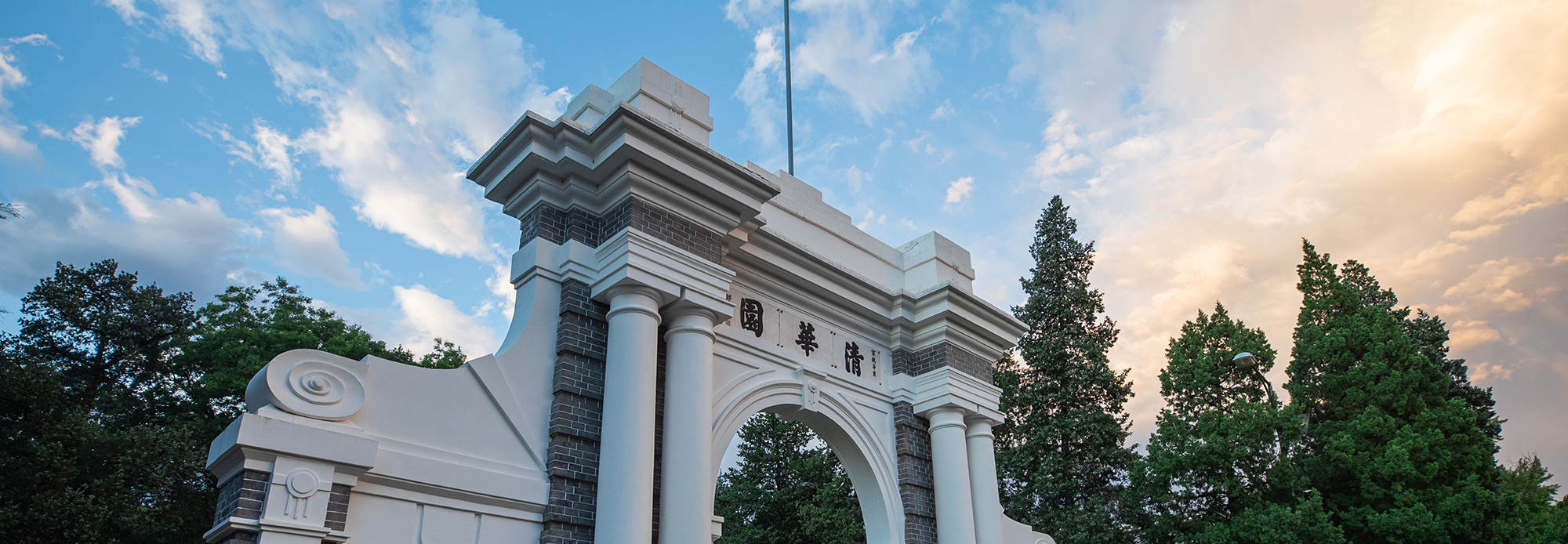The research group led by Prof. Yunfei Pu and Prof. Luming Duan from Tsinghua’s Institute for Interdisciplinary Information Sciences has recently achieved multiplexing-enhanced generation of heralded atom-photon quantum entanglement over a 12 km fiber with a cold atom quantum repeater node. This work breaks several world records for metropolitan-scale (>10 km) quantum network, including: 1. The distribution rate of heralded atom-photon quantum entanglement over metropolitan distance (1.95 kHz); 2. The ratio of atom-photon entanglement generation rate to the quantum memory decoherence rate for metropolitan-scale fiber (also known as “link efficiency, reaching 0.46 in this work); 3. The enhancement factor of entangling rate through multiplexing (280 modes, 140-fold enhancement). The findings were published in Nature Communications, with the title Fast delivery of heralded atom-photon quantum correlation over 12 km fiber through multiplexing enhancement.
Quantum networks and quantum repeaters are among the most promising approaches for implementing large-scale quantum computing, intercontinental quantum communication, global quantum internet, and ultra-high-precision quantum metrology in the future. The challenge in scaling up a quantum network lies in the rate for distributing heralded entanglement through photon interference between remote network nodes should be faster than the decoherence rate of each quantum network node (the ratio of these two rates is also known as “link efficiency). With link efficiency larger than unity, quantum networks can be scaled up through entanglement swapping and multiple pairs (two or more) of remote quantum entanglements can be exploited for applications. Therefore, a link efficiency larger than 1 is a threshold for scaling up a quantum network. Currently, achieving a link efficiency greater than 1 is only possible in laboratory-scale quantum networks (with fiber lengths of approximately 10 meters). For metropolitan-scale quantum networks (fiber lengths greater than 10 km), the long time required for a single entangling attempt (on the order of hundreds of microseconds) due to the travel time of light in long fibers greatly limits the success rate of long-distance entanglement generation. As a result, the link efficiency for remote entanglement generation in a metropolitan-scale quantum networks is still less than 0.01 in any physical platform to date.

Figure 1. Quantum repeater scheme with multiplexing enhancement. 280 time-bin photonic modes are generated by successively exciting 70 independently addressable cells in a 2D quantum memory array. The photon modes are converted to communication band by a wavelength conversion module and are detected at the detector after 12 km of transmission in optical fiber.
In this work, the research group led by Prof. Yunfei Pu and Prof. Luming Duan exploits time-bin multiplexing of totally 280 DLCZ quantum memory modes (70 independently addressable memory cells and 4 different angular modes) to fully fill the 12 km fiber. With this protocol, the time required for a single entanglement attempt was reduced from 120 microseconds to 850 nanoseconds, which increases the attempting rate by 140 times and enables fast distribution of remote atom-photon quantum correlation. The link efficiency reaches the world's best of 0.46. This also marks the first time that the link efficiency of metropolitan-scale quantum networks can reach the order of magnitude of unity. Notably, if two such quantum repeater nodes are entangled via single-photon interference in the future, the link efficiency can reach 0.92, potentially reaching the scaling threshold for metropolitan quantum networks and making future multi-node (more than 2) quantum network possible.



